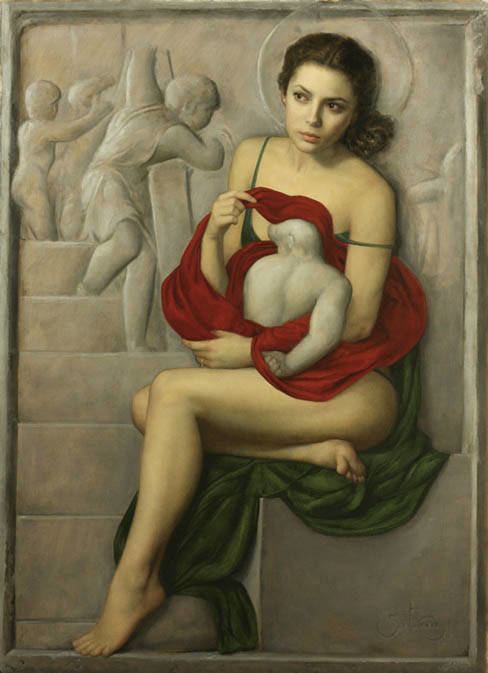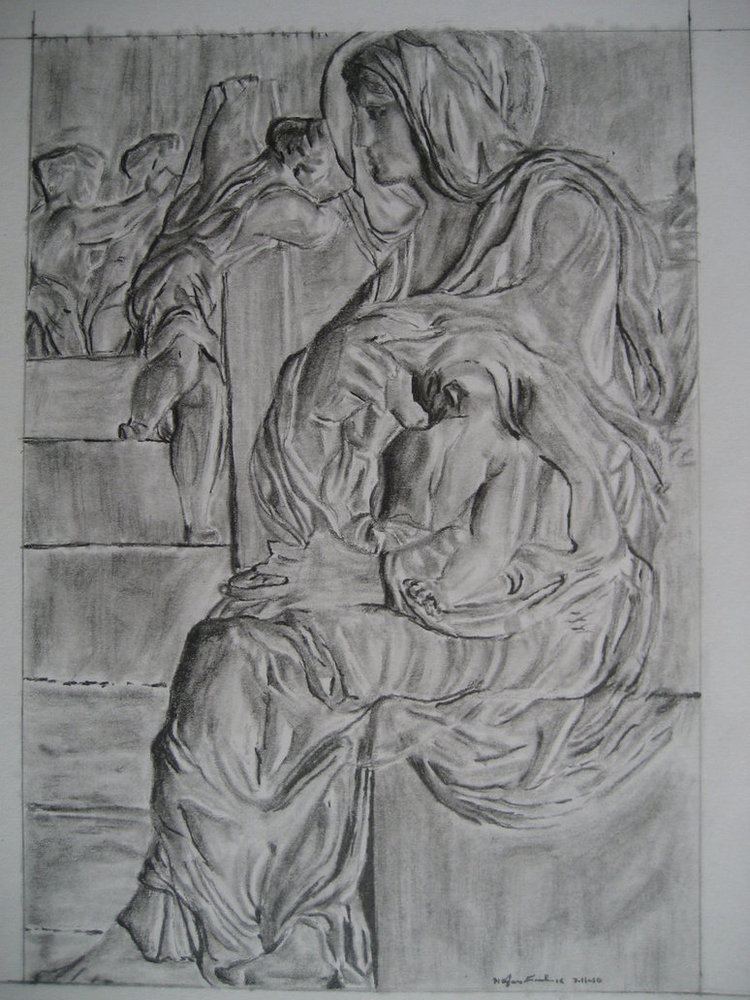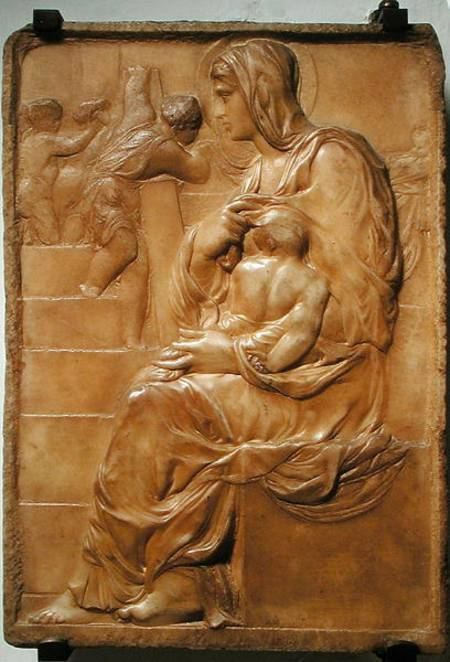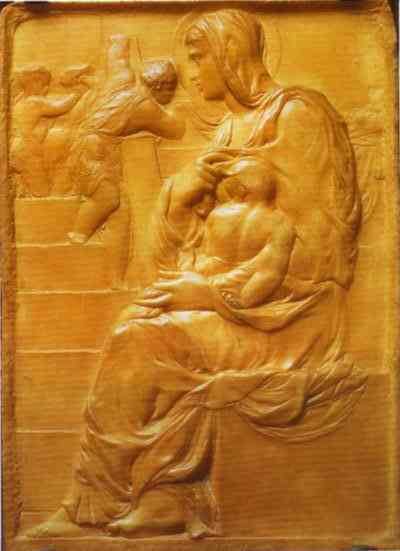Year c. 1491 Created 1490–1492 | Type Marble Genre Kinetic art | |
 | ||
Dimensions 56.7 cm × 40.1 cm (22.3 in × 15.8 in) Periods Italian Renaissance, High Renaissance, Renaissance Subject Mary, Christ Child, Madonna Similar Michelangelo artwork, Relief, High Renaissance artwork | ||
The Madonna of the Stairs (or Madonna of the Steps) is a relief sculpture by Michelangelo in the Casa Buonarroti, Florence. It was sculpted around 1491, when Michelangelo was about seventeen. This and the Battle of the Centaurs were Michelangelo's first two sculptures. The first reference to the Madonna of the Stairs as a work by Michelangelo was in the 1568 edition of Giorgio Vasari's Lives of the Most Excellent Painters, Sculptors, and Architects.

Description

The work is an obvious homage to stiacciato of Donatello, as Vasari also noted, both in technique and sizes plans with millimeter thickness variations, both in iconography, starting from the scale pattern with pronounced steps and handrails foreshortened, visible for example in the Feast of Herod in Lille, smashing spatially opening a path of dramatic vanishing.

The figure of the Madonna, sitting on a square stone, and in profile while looking away, occupies the entire height of the relief, from edge to edge, with a severity and monumentality reminiscent of the classic rods. Very original is the composition of the sacred group, at the same time blocked and dynamic, with the Virgin and upright and keep him away gaze, in a prophetic attitude, as she lifts her dress to feed or protect the child asleep, and generates a movement spiral thanks to the arrangement in opposite limb: Jesus has indeed let go of his arm behind his back and Maria comes to weave his feet, showing the right plant and breaking the stillness of the smooth surface of the bas-relief. The right hand of the Child turned out was later used more than once by the artist to symbolize the abandonment of the body in sleep or in death, as in the portrait of Lorenzo de 'Medici, Duke of Urbino or the Bandini Pietà and refers to ' Farnese Hercules (since by Michelangelo man is seen as Hercules).

Pronounced is the muscle of the Child and the taking of Mary, especially with large hands, thanks to the different treatment of the surfaces, make it appear vigorous simple, everyday gesture. Virtuoso is finally the fall of the drapery, especially on Cubic's seat, which follows form with great realism.

On the left, on the scale that gives its name to the survey, there are two putti just blanks in attitude dance or fight and another who, leaning on the handrail, tents, along with a fourth figure placed behind the Virgin, a drape. It is difficult to determine the significance of this background scene, perhaps a simple exercise in style or a tribute to dancing putti Donatello.
The work is inspired by the book Klimax tou Paradeisou (Ladder of Paradise) of John of the Ladder




